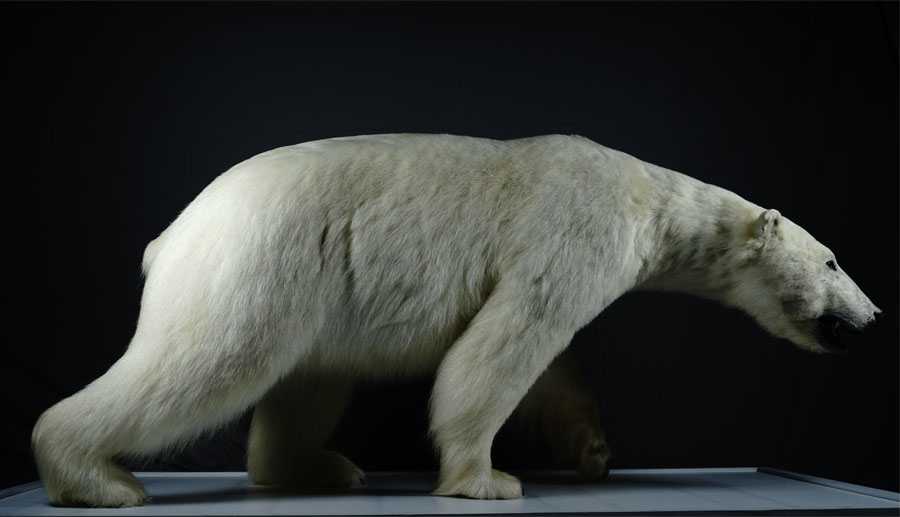

Man and Nature: Donations from Kenneth E. Behring
Polar Bear
Polar Bear
Ursus maritimus
Order: Carnivora
Family: Ursidae
Genus: Ursus
Distribution: Around the Arctic Ocean
Endangered category: Vulnerable Species (VU), CITES
Appendix II
235 cm long, 85 cm wide and 105 cm high
Also known as white bear or ice bear, it is one of the largest terrestrial carnivores, with the body length from 1.8 to 2.8 m. Their shoulder height can reach 1.7 m. It weighs 150 to 650 kg. They have a long and straight head, small ears, a long neck and black skin. They have thick and transparent guard hair and fine hair. Their fur looks like white or faint yellow. Hollow tubular guard hair can keep them warm. They have extremely thick fat deposit and big feet with hair on the bottom, well enabling them to swim and walk on the ice. Sea ice is an important habitat for polar bears. They prey with the help of the floating ice and chase after seals along the crack of ice and the coast. The polar bear is a typical carnivore in the Ursidae family. They can swim and dive for a long time. When the ice thaws and polar bears can’t prey on seals in summer, they can survive without having any food for several months thanks to their stored fat.
